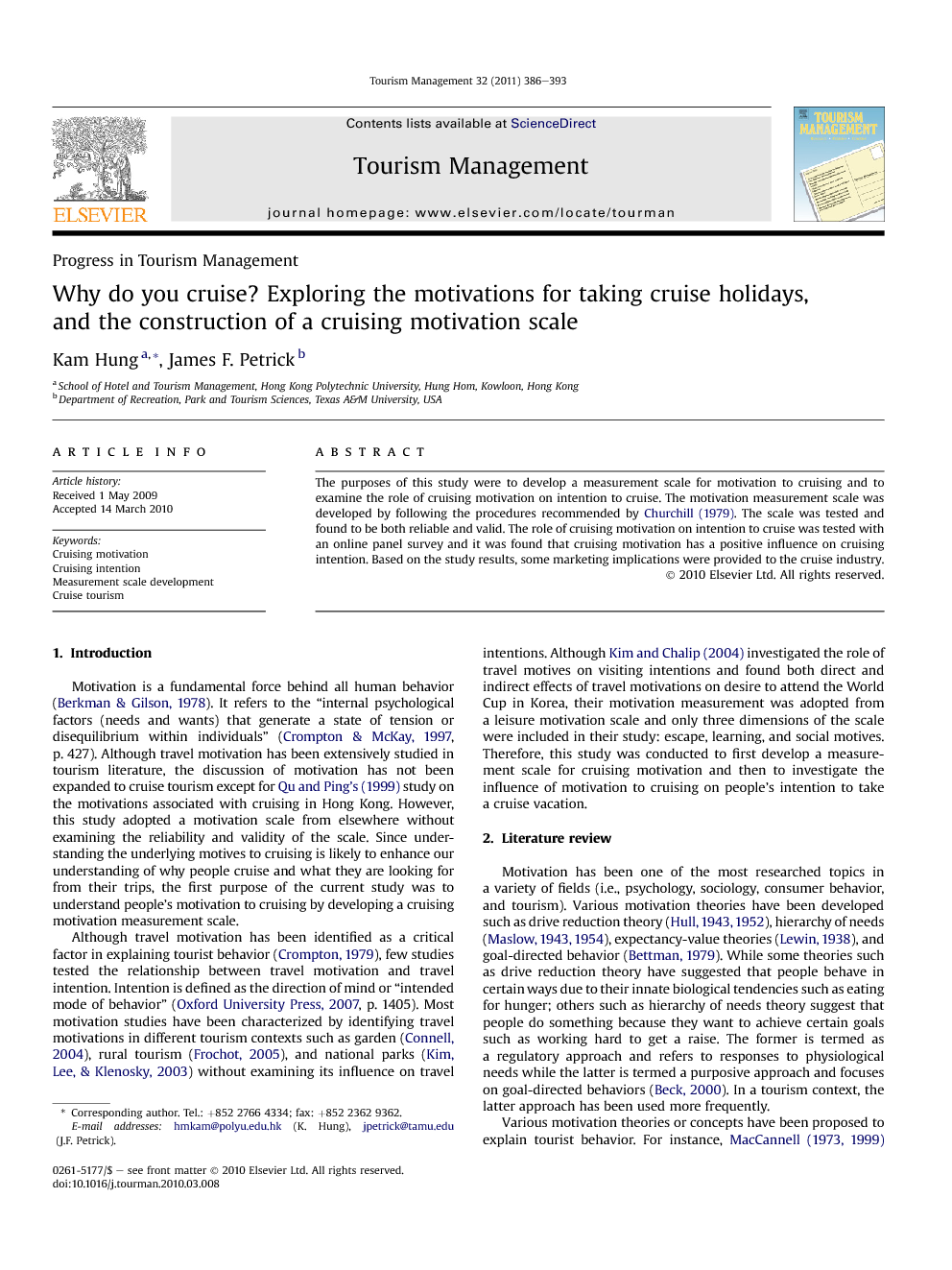ترجمه فارسی عنوان مقاله
چرا شما به گشت و گذار می پردازید؟ بررسی انگیزه ها برای گرفتن تعطیلات کروز، و ساخت و ساز در مقیاس انگیزش کروز
عنوان انگلیسی
Why do you cruise? Exploring the motivations for taking cruise holidays, and the construction of a cruising motivation scale
| کد مقاله | سال انتشار | تعداد صفحات مقاله انگلیسی |
|---|---|---|
| 4985 | 2011 | 8 صفحه PDF |
منبع

Publisher : Elsevier - Science Direct (الزویر - ساینس دایرکت)
Journal : Tourism Management, Volume 32, Issue 2, April 2011, Pages 386–393
ترجمه کلمات کلیدی
انگیزش کروز - قصد کروز - توسعه در مقیاس اندازه گیری - گردشگری کروز
کلمات کلیدی انگلیسی

